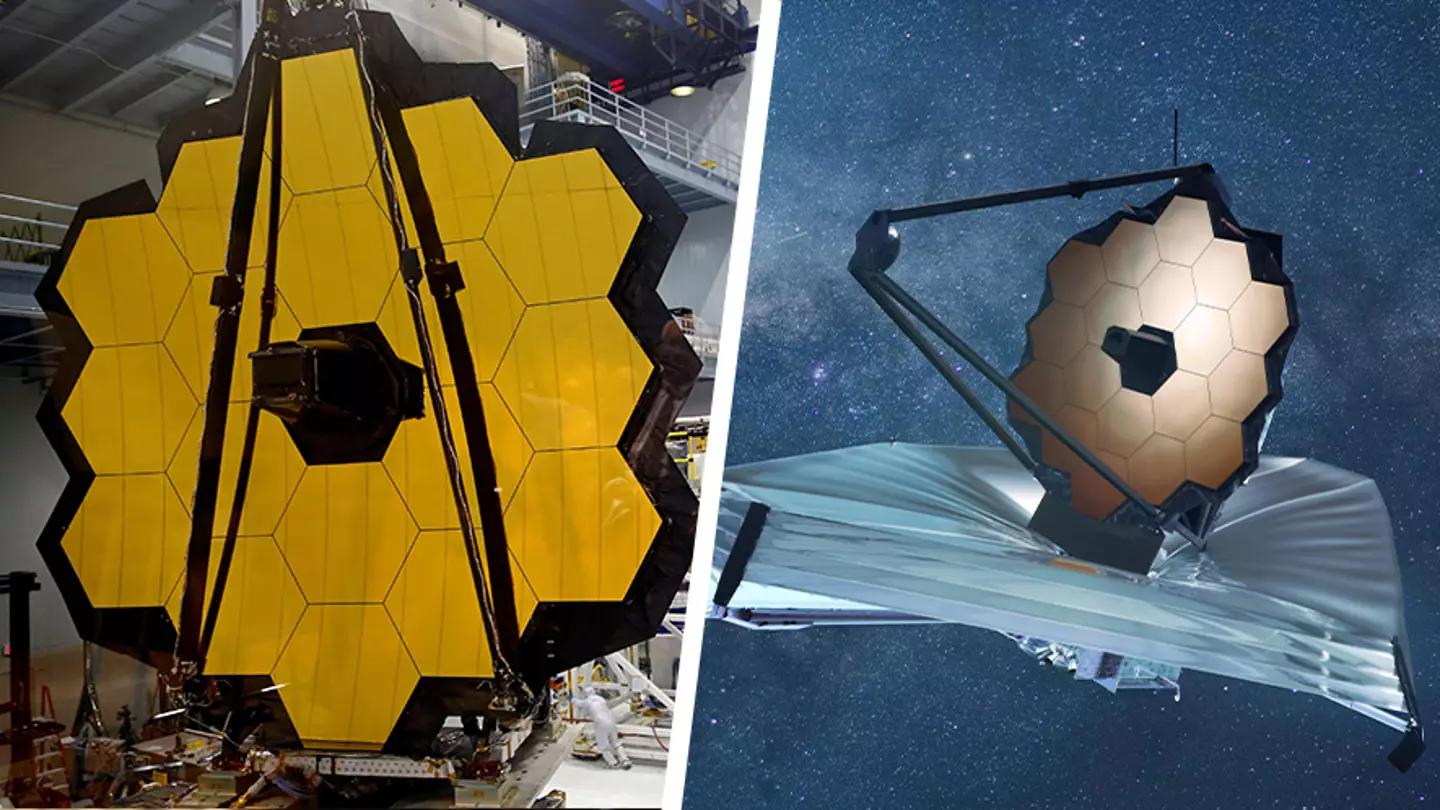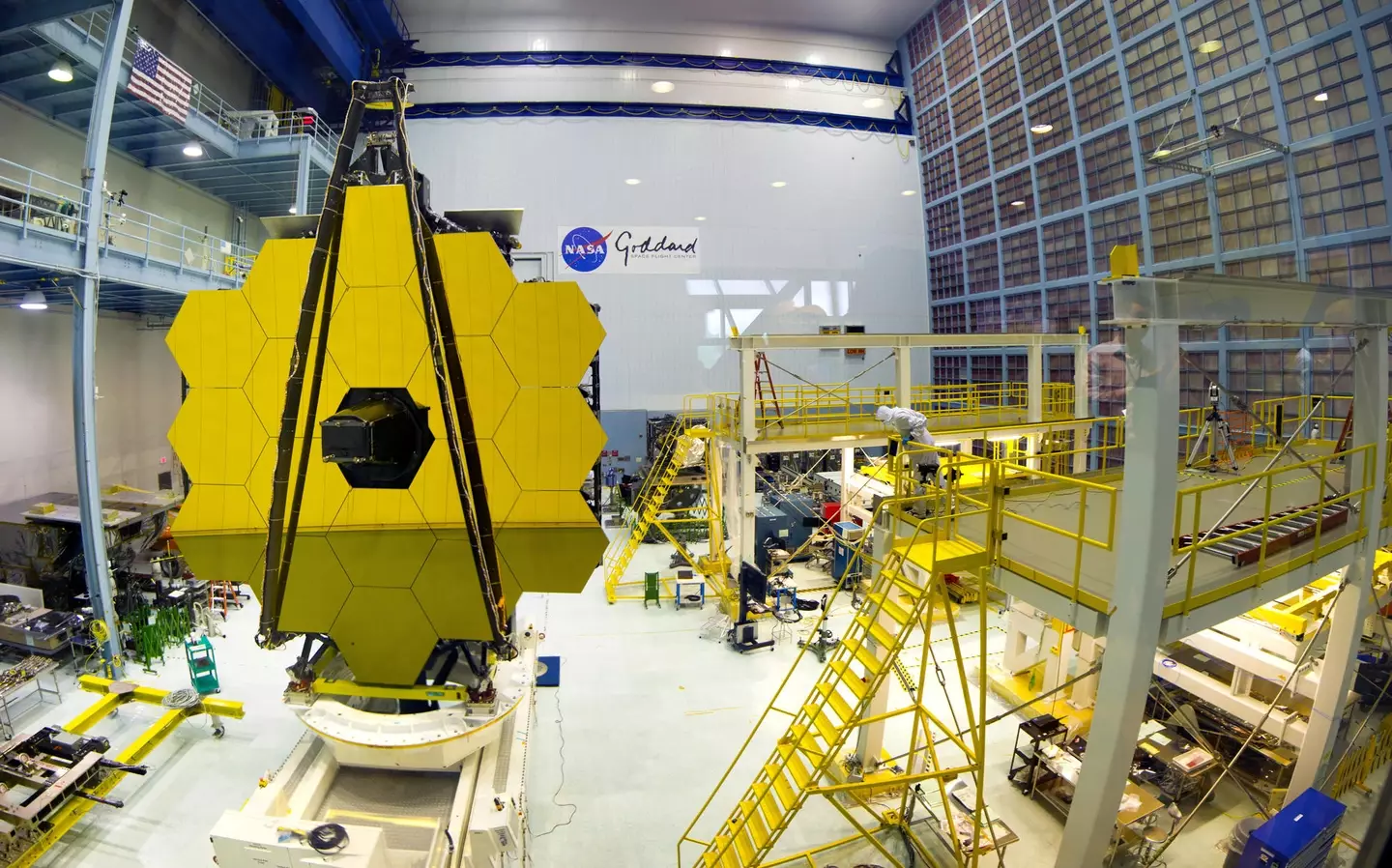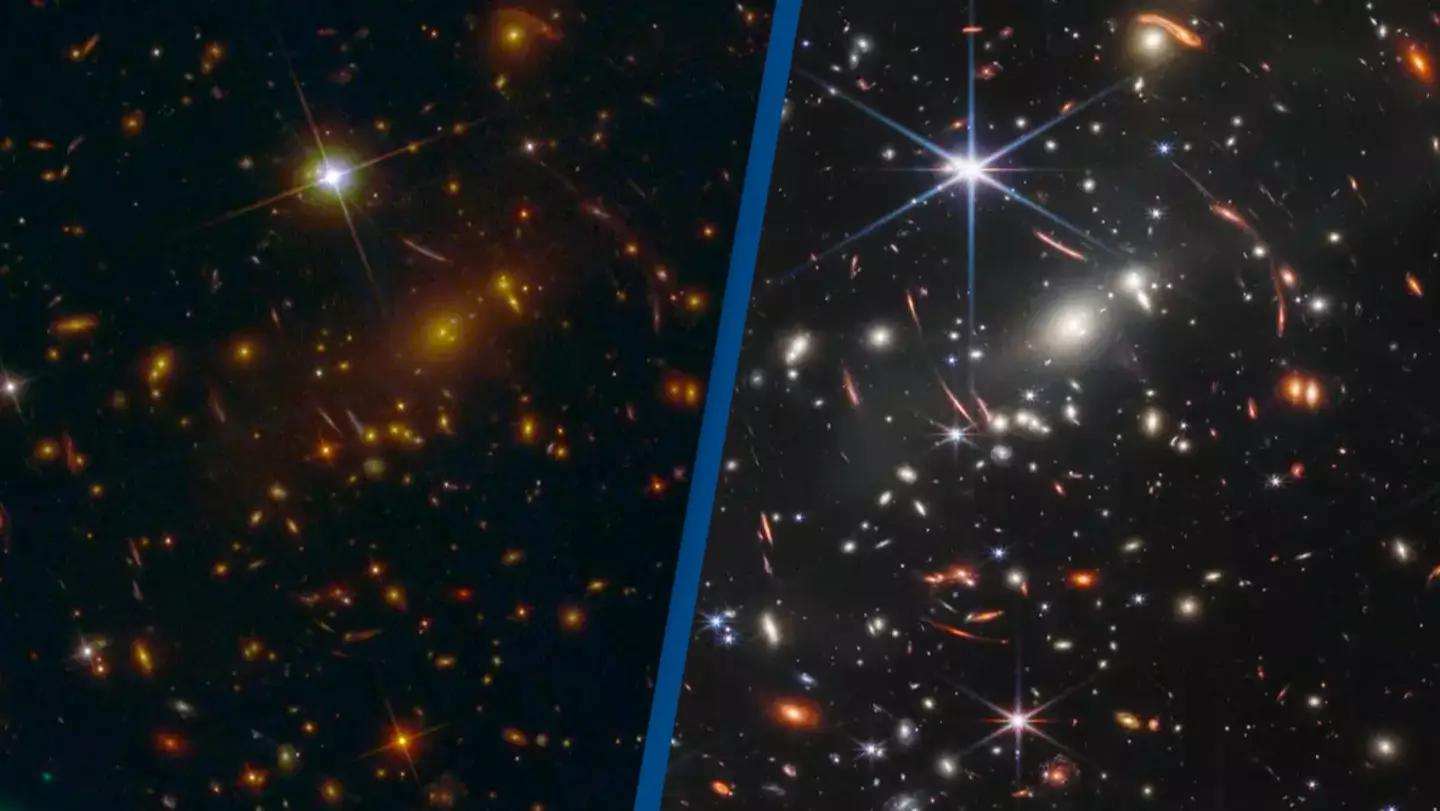
Scientists believe the James Webb Space Telescope has suffered permanent damage in space.
While experts had planned on the $10 billion project being impacted by the forces that dwell in the cosmos, it appears a micrometeoroid strike has done some pretty heavy damage.
The tiny space rock collision incident is suspected to have happened in May.
It has damaged the C3 mirror, which is one of the telescope's 18 gold-plated mirrors.
Advert

The James Webb Space Telescope has actually suffered five other micrometeoroid impacts since it was launched into space, all of which have caused 'deformities' on the mirrors.
However, this C3 incident has been labelled more significant than the others.
After an initial assessment, Associate Administrator at NASA, Thomas Zurbuchen, said the C3 mirror was 'still performing at a level that exceeds all mission requirements'.
Advert
But a recently published report found a 'small effect on the telescope throughput, which is not yet measurable'.
This effect has been labelled 'uncorrectable', meaning that damage is now sadly permanent.
"At present, the largest source of uncertainty is long term effects of micrometeoroid impacts that slowly degrade the primary mirror," the report stated.

Advert
It added: "The micrometeoroid which hit segment C3 in the period 22—24 May 2022 UT caused significant uncorrectable change in the overall figure of that segment.”
To make matters worse, researchers believe this strike 'exceeded prelaunch expectations of damage for a single micrometeoroid, triggering further investigation and modeling by the JWST Project'.
While researchers had planned for the telescope to endure the forces of space, they're unclear on how many more strikes like this the JWST can take.
“It is not yet clear whether the May 2022 hit to segment C3 was a rare event or whether the telescope may be more susceptible to damage by micrometeoroids than pre-launch modeling predicted," the report stated.
Advert
Thankfully, it's not all doom and gloom.

Forbes says researchers might have a solution to avoid these types of strikes in the future.
The news outlet says experts could limit the amount of time the JWST spends 'looking in the direction of orbital motion, which statistically has higher micrometeoroid rates and energies'.
Advert
People were blown away earlier this month when the first images taken by the telescope were released to the public.
A series of images have peered into the deepest pockets of the universe and captured breathtaking displays of what lies far beyond what we've been able to capture before.
Topics: Space, Technology
